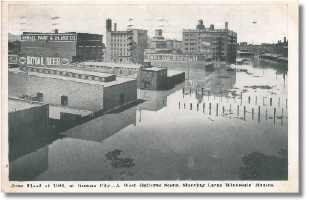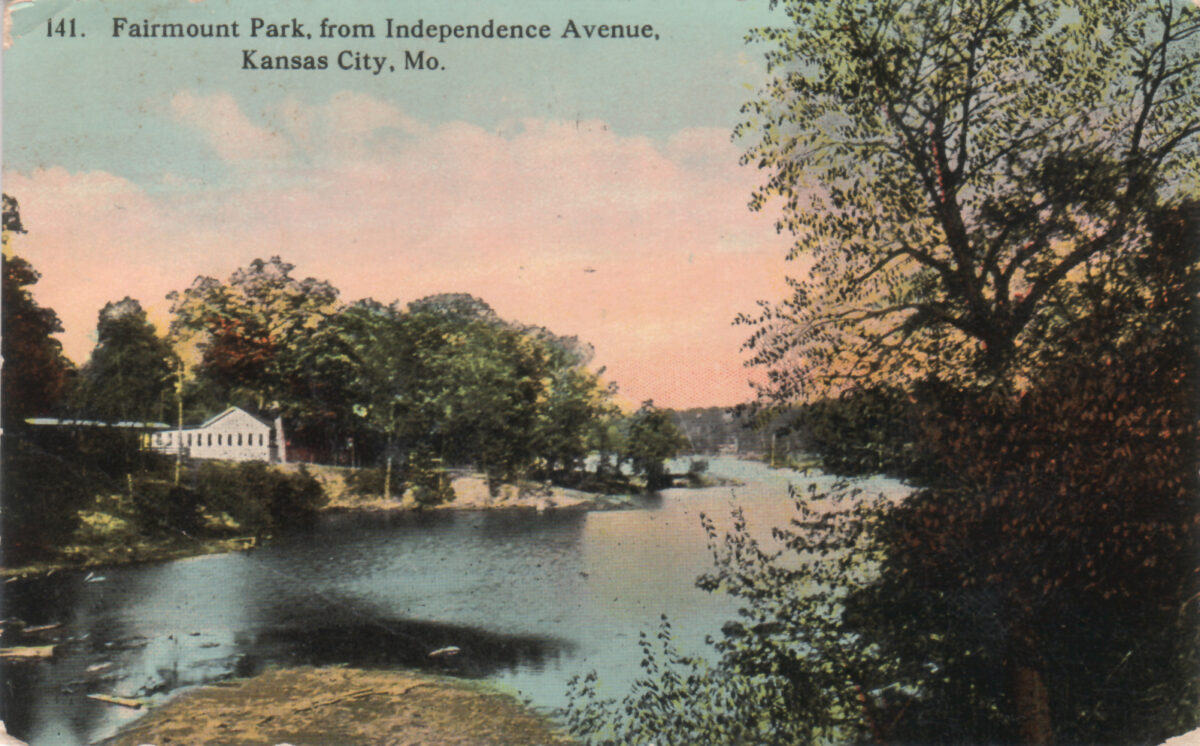
By Michael Bushnell
Northeast News
July 25, 2012
This week’s postcard shows the result of countless days of rain and the lack of a levee system on the West Bottoms area of Kansas City during the June flood of 1908.
The card, published by the Elite Postcard Company of Kansas City, Mo., is “A West Bottoms Scene Showing the Large Wholesale Houses.”
The flood of 1908 by proportion wasn’t as disastrous as the floods of 1903 or 1951. One-Hundred-Four years ago, the waters of the Kaw River rose gradually, giving residents and smaller businesses time to evacuate what they could from their homes and property.
On June 9, 1908, the waters of the Missouri were still about 1.5 feet lower than that of the Kaw. So powerful was its current at flood stage that at the confluence of the two rivers, the Kaw’s current shot out over two-thirds of the river’s width before the mighty Missouri claimed its channel.
A number of the major meat packing operations such as Cudahy, Swift, Wilson, Morris and the great Armour suffered immeasurable amounts of water damage to their plants and yards. The Kansas City Stock Yards lost millions of dollars, as well as hundreds of thousands of animals being held in pens for slaughter. Livestock traders ushered as many head of stock into the Livestock Exchange Building that would fit just to stave off huge losses.
Train service was all but suspended to Kansas City, as Union Depot in the West Bottoms was inundated in six to eight feet of water for over a week.
Following this flood (which was only five years after the previous one) and catastrophic after-effects, civic leaders agreed a new site had to be chosen for the city’s main train station. The result was, and is, of course, Union Station on Pershing Road, situated high above the flood-prone West Bottoms.
This card was sent to Miss Rose Dierks at Armour Boulevard and Paseo, Kansas City, Mo., on July 2, 1908. The message reads, “Hope you all are feeling fine and dandy. This is with kindest regards, yours truly, Paul.”

















